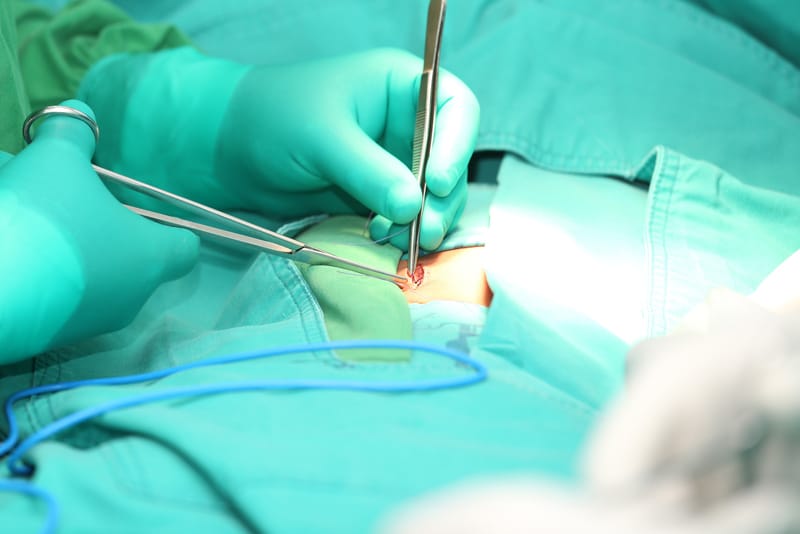A hernia occurs when an organ or fatty tissues pushes through an abdominal opening. Surgery is performed to remove a hernia that grows larger or causes pain. Hernia repair is one of the most common surgeries performed in the United States, according to the Food and Drug Administration. Specialists in gastrointestinal surgery work with other physicians to repair hernia. Providers can rely on a gastroenterology medical billing expert to submit accurate claims and get reimbursed for their services.
Hernia Types and Surgical Approaches
There are different types of hernia such as inguinal hernia, femoral hernia, umbilical hernia, incisional or ventral hernia, epigastric hernia, and hiatal hernia.
- Non-complex hernias: Treatment options for non-complex hernias such as inguinal or umbilical hernia will depend on factors such as the location, size and type of hernia and also the severity of the symptoms. For common small hernias, the hole or weakness is usually repaired using a mesh material via laproscopy. The procedure is often performed on an outpatient basis.
- Complex hernias: Advanced techniques such as component separation and mesh repair are used to repair complex hernias such as incisional hernias. The surgery involves strengthening and reconstructing a weakened abdominal wall and restoring displaced muscles.
Coding Hernia Repair, Mesh Implantation, and Mesh Removal
According to an AAPC article, knowing how to differentiate hernia repairs and surgical approaches is important for correct medical coding. The two approaches for surgical hernia repair are: open and laparoscopic. A synthetic or prosthetic mesh is used to strengthen the repair in 90 percent of all hernia surgeries (AAPC). The 2019 CPT codes for hernia repair are as follows:
- 49560-49566 – Incisional or ventral
- 49650-49657 – Laparoscopic
- 49491-49525 – Inguinal
- 49540 – Lumbar
- 49550-49557 – Femoral
- 49570-49572 – Epigastric
- 49580-49587 – Umbilical
- 49590 – Spigelian
Hiatal Hernia Repair:
- 39540-39541 – Hiatal, Repair, diaphragmatic hernia
- 43280– Laparoscopy, surgical, esophagogastric fundoplasty
- 43281– Laparoscopy, surgical, repair of paraesophageal hernia, includes fundoplasty, when performed; with implantation of mesh
- 43282– Laparoscopy, surgical, repair of paraesophageal hernia, includes fundoplasty, when performed; without implantation of mesh
- +43283 – Laparoscopy, surgical, esophageal lengthening procedure (eg, Collis gastroplasty or wedge gastroplasty) (List separately in addition to code for primary procedure)
- 43332- 43337 – Repair, paraesophageal hiatal hernia
- 43338– Esophageal lengthening procedure (eg, Collis gastroplasty or wedge gastroplasty) (List separately in addition to code for primary procedure)
Parastomal Hernia Repair:
- 44346 – Revision of colostomy; with repair of paracolostomy hernia (separate procedure
- Other codes to report hernia repair:
- 15734 – Muscle, myocutaneous, or fasciocutaneous flap; trunk
- 20680 – Removal of implant; deep (eg, buried wire, pin, screw, metal band, nail, rod or plate)
- +49568 – Implantation of mesh or other prosthesis for open incisional or ventral hernia repair or mesh for closure of debridement for necrotizing soft tissue infection (List separately in addition to code for the incisional or ventral hernia repair) (Use 49568 in conjunction with 11004–11006, 49560–49566)
- 49659 – Unlisted laparoscopy procedure, hernioplasty, herniorrhaphy, herniotomy
- 49999 – Unlisted procedure, abdomen, peritoneum and omentum
The AAPC article lists various scenarios for reporting “removal of mesh”:
- Removal of mesh from a previous surgery is included in recurrent hernia repair. Therefore, when recurrent hernial repair is performed in conjunction with implanted mesh removal from a previous surgery, removal of mesh should not be coded separately.
- Modifier 22 Increased procedural service can be added to the recurrent hernia repair code in case additional time is taken to dissect the old mesh.
- Add-on code 11008 Removal of prosthetic material or mesh, abdominal wall for infection (eg, for chronic or recurrent mesh infection or necrotizing soft tissue infection) (List separately in addition to code for primary procedure) is only for use with 10180 Incision and drainage, complex, postoperative wound infection and 11004-11006, extensive debridement of skin, subcutaneous tissue, muscle, and fascia to treat necrotizing soft tissue infections.
- Mesh removal should be reported separately if implanted mesh from previous surgery is removed without recurrent hernial repair. As there is no separate code of implanted mesh removal report, unlisted procedure code 49999 Unlisted procedure, abdomen, peritoneum and omentum should be reported.
Points to note:
- +49568 should be reported only with only (49560-49566) incisional or ventral hernia repair and 11004-11006. The use of mesh or other prostheses with the other types of hernia is not reported separately. The use of mesh or other prosthesis is considered inherent to laparoscopic, inguinal, lumbar, femoral, epigastric, umbilical, and spigelian hernia repairs.
- Unlisted code claims should be submitted with a full operative report to avoid denials.
- As mesh is always placed during laparoscopic hernia repairs, mesh implantation should not be billed separately for laparoscopic hernia repair.
- Incidental hernia repair performed during another open abdominal procedure should be reported only if it is medically necessary and performed at a different incision site.
Reporting hernia repair and abdominal reconstruction can be complex. Physicians need to ensure accurate and specific documentation so that coders and medical billing service providers can ensure accurate claim submission. A reliable gastroenterology medical billing company will work along with physicians to make sure that everything is submitted correctly according to payer policies.




